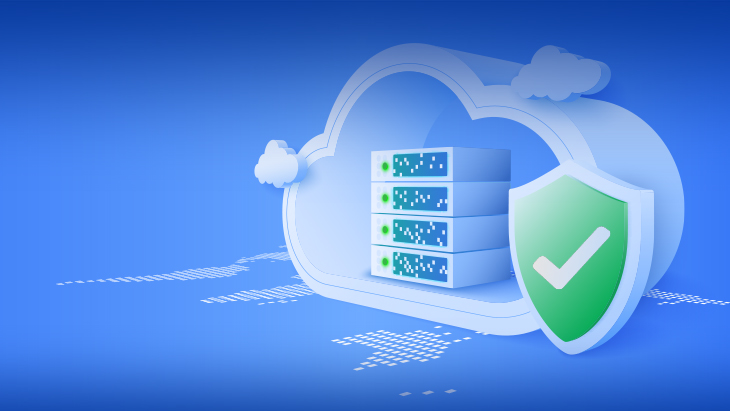
The First Step to Avoid Cyber Risks in Cloud Security
Incorrectly designed credential management procedures are one of the key cyber hazards in cloud security, cloud computing, and access security. If the proper cybersecurity precautions are not taken, cloud computing platforms, which are directly involved in the operational process with the widespread use of the remote working model, could make you a target for hackers.
With the remote work paradigm, employees may access the Software as a Service (SaaS) or the cloud-based systems they need to execute their tasks, making application management much simpler on any device, independent of time or location. With this transformation of the business work model, it is essential to manage privileged access to your organization's IT network in the safest manner possible.
Business operations are more productive when personal devices have access to cloud computing-based devices that are defined in the IT network. However, if a username and password are stolen while you are logging in to the IT network, your entire infrastructure will quickly become useless because it becomes very challenging to monitor the suspicious activities of hackers who breach your IT network with stolen usernames and passwords in a cloud computing system that does not utilize advanced security procedures and safeguards.
The Most Crucial Step is to Secure Access and Credentials
In cloud computing systems, protecting identity and accessing information is the primary method of addressing data security. Ensuring the account's online security and keeping an eye on how users are interacting with your IT infrastructure within the system are two crucial factors. By 2023, it is expected that insufficient management of privileged account access within the IT network could be responsible for 75% of security breaches that result in data breach incidents.
One can readily say that malicious attempts against identity information are one of the most dangerous cyber attack strategies employed today, given that the majority of cyber attackers target the company directory and identity infrastructure.
To avoid issues with the security of identity and access information in IT infrastructures, a consistent management procedure must be established. The foundation of this procedure stands out as Privileged Access Management solutions, which are founded on the principles of least privilege and zero trust. With the aid of the appropriate protocols and a Privileged Access Management (PAM) solution that you integrate into your IT infrastructure, you can ensure that your company is secure in the online world.
Over-privileged Accounts Need More Attention
75% of data breach cases, or 66% of privileged access management failures, are the result of more than five breaches for the same reason. Organizations' lack of awareness of identity and access management has resulted in a wide range of issues while attempting to access their IT infrastructure. The lack of properly specified privileged account boundaries in terms of allowed access is the root cause of these issues.
Over-privilege allows a user to access a location or unit within the IT network that they would not typically be able to access, which is one of the main causes of data breach events involving privileged account credentials. The management and operation of the system may become compromised if users access a location they are not authorized to. Moreover, additional authorization might enable a user to obtain crucial data by allowing them to access a location that is outside the scope of their access authority. In such a situation, data breaches are unavoidable if the user with the undue authority behaves maliciously deliberately, or if IT training is insufficient.
A study of privileged account management in businesses and data breaches as a result of this management, amply demonstrates the lack of maturity in privileged access management in organizations. A secure password vault is not used by 52% of the employees polled, according to the report. 65% have full access to the IT network's data and cloud computing technologies.
According to the poll, 21% of respondents did not use multi-factor authentication to protect privileged accounts on the IT network, and 63% discovered that when an employee resigned it frequently took over a day before their privileged access authorization was removed.
PAM Solutions Plays a Key Role in Cloud Security
One of the best methods for ensuring the security of cloud computing systems is privilege access management. Utilizing Privileged Access Management (PAM) solutions is crucial in reducing the impact of internal and external threats while assigning cloud security since cyber risks pose a severe danger to enterprises' activities. Because external threats are not the only factors posing a threat to the security of cloud computing systems. Cyber threats resulting from access permission violations within the organization might also happen for a variety of reasons.
Due to the modules that it’s comprised of, Kron’s PAM solution, Single Connect, best ensures the security of cloud computing systems. Understanding how to prevent cyber attacks in cloud computing systems can be helped by carefully examining each of Single Connect's six fundamental modules:
- Dynamic Password Controller: This module secures the passwords of users with privileged access across the entire IT infrastructure. The Dynamic Password Controller, which monitors the passwords instantly and facilitates your ability to maintain control over the entire system with real-time access, is also crucial to the accomplishment of the duties within the system. Users submit their passwords, connect to the target endpoint, and start a task request in the workflow while carrying out tasks in the system.
- TACACS+ / RADIUS Access Management: This module extends the authentication and policy settings of Active Directory (AD) to the network and offers Authorization, Authentication and Accounting (AAA) services within the network architecture. One of the fundamental techniques for avoiding over-authorization is TACACS+ / RADIUS Access Management, which enables you to easily manage access permissions in the system.
- Privileged Session Manager: This module provides logging of all sessions on the network and servers. All session logins for privileged access management, including command and context-sensitive filtering, are under the control of the Privileged Session Manager.
- Database Access Manager: This module assists you in preventing data breaches by securing data access through logging, cybersecurity policy management, and masking. The Database Access Manager keeps track of every action taken by system administrators and other users with special access on the network and provides visibility into the IT infrastructure.
- Multi-Factor Authentication (MFA): MFA requires users who log in to your IT infrastructure with real-time, two-way authentication. It simultaneously checks the time and user’s location while logging in to the system, ensuring flawless identity verification.
- Privileged Task Automation (PTA): PTA allows the configuration of network workflows thanks to its dynamic and extendable instruction sets. PTA automates the fundamental phases in the business process and boosts productivity, by allowing employees to concentrate on other tasks.
One of the most significant Privileged Access Management solutions in the market, Single Connect will help you avoid cyber threats, enhancing cloud security. Contact us to learn more about Single Connect.













